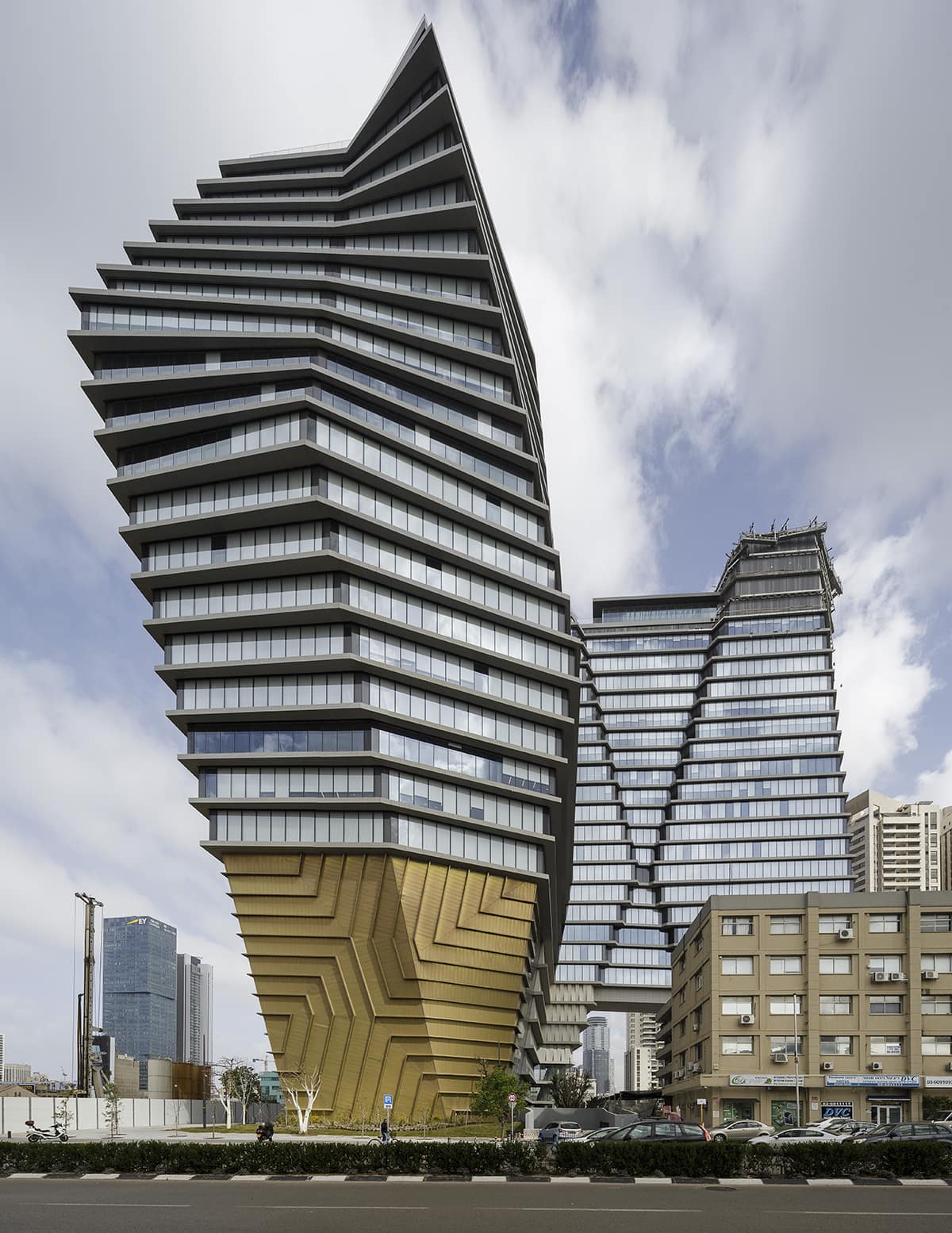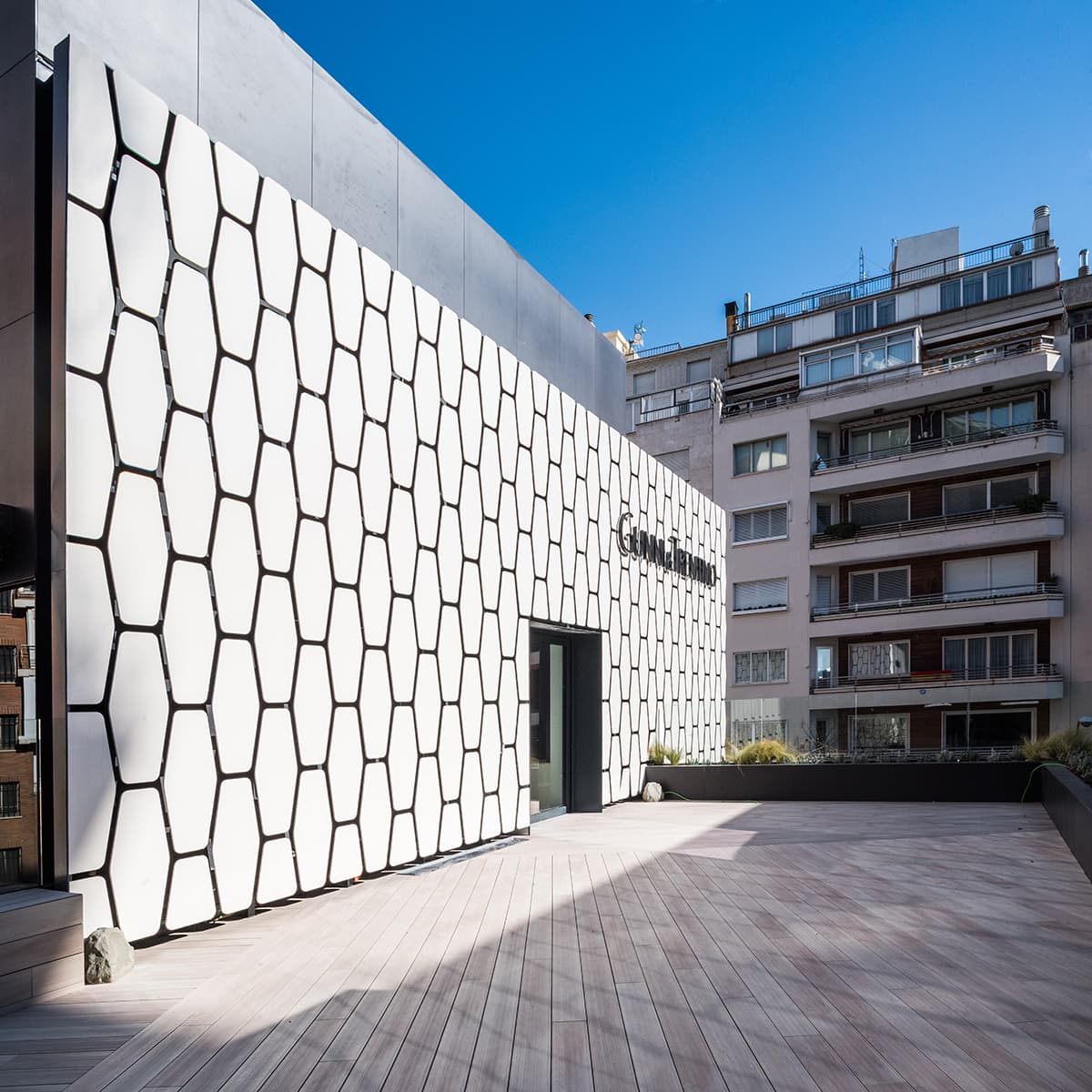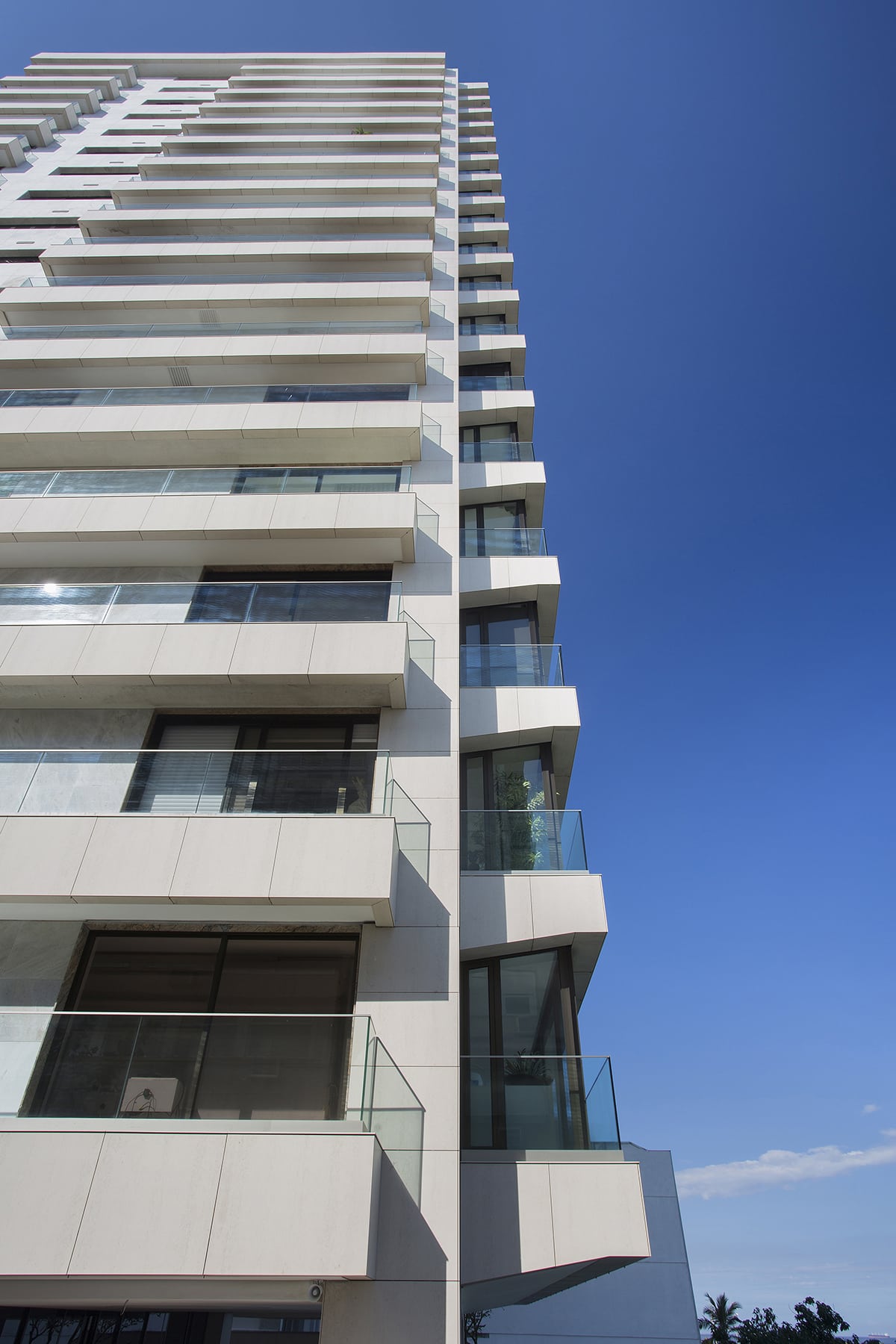How Cosentino Is Transforming Buildings Around The World
One reason facades worldwide are taking on a more dynamic profile.

The ToHa building in Tel Aviv, designed by Ron Arad, rises on two legs and is clad in six shades of Dekton.
Too often, tall buildings get attention because they are, well, tall. Even those that don’t quite scrape the sky are more about verticality that anything else. Blame it on the curtain wall. No matter how cleverly the volume of a tower is tweaked, if it’s dressed in glass, there’s nowhere to look but up. While that sleek skin isn’t about to disappear anytime soon, increasingly, architects and corporations are turning to other treatments that not only meet their technical requirements but invest buildings with an eye-engaging dimensionality and presence, as well.
Cosentino, an industry leader in surface materials, has long been the go-to for designers and clients looking to give their projects a significant finishing touch. And one of its newest products, Dekton—a high strength composition of porcelain, glass and quartz—is quickly finding its way to some of the more inventive buildings around the world. Take the ToHa building in Tel Aviv. A sort of inverted ziggurat designed by Ron Arad, the 29-story structure rises on two beefy legs, like some gargantuan robot from an old sci-fi flick. The custom colored Dekton panels on the exterior—a progressive palette of six shades—add texture and depth to this less-than-conventional facade. In Madrid, Mendoza+Simal Architects incorporated large format hexagonal pieces into its renovation of the headquarters of Gunni & Trentino, a supplier of luxury interior decor products. Black at the base of the building and executed in a lighter, warmer tone above creating a honeycomb effect, the Dekton panels give the facade a graphic punch and underscore the street-friendly scale of the building.

In Madrid, Mendoza+Simal Architects incorporated large format hexagonal pieces into its renovation of the headquarters of Gunni & Trentino, a supplier of luxury interior decor products.

Never purely cosmetic, Dekton played a key role in reviving Cap Ferrat, a 45-year-old residential landmark in Rio de Janeiro’s iconic Ipanema neighborhood. Over the years, aluminum components of the balconies and the original granite pieces that sheathed their perimeter beams had deteriorated badly. Completely replacing the damaged cladding proved cost prohibitive. And any new material installed over the existing elements needed to complement the building’s aesthetic and more importantly, not weigh more than 90 kg per square meter. The office in charge of the project—Di Filippo Arquitectura—reviewed various options before determining that Dekton offered the best solution.

Cap Ferrat, a 45-year-old landmark residential building in the Ipanema neighborhood of Rio de Janeiro, was deteriorating badly. Di Filippo Arquitectura was called in to rescue the building, and chose Dekton to secure and update the facade.

“We had to choose a cladding material with very particular properties,” explains Juan Carlos Di Filippo. “Its porosity needed to be as low as possible in order to resist the damage caused by a seafront environment, it needed to weigh as little as possible, but have large dimensions, and it needed to be able to be installed using the system of stainless-steel inserts. Last, but not least, it needed to have a low level of solar absorption.”
While there are plenty of glass and steel towers going up across the planet—some of which truly deserve attention—keep an eye open for buildings that present a different face to the world. They may not make the headlines, but they may well make your day.
